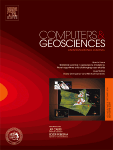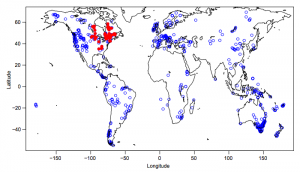Abstract: We describe a new R package, paleofire, for analysis and synthesis of charcoal time series, such as those contained in the Global Charcoal Database (GCD), that are used to reconstruct paleofire activity (past biomass burning). paleofire is an initiative of the Global Paleofire Working Group core team (www. gpwg.org), whose aim is to encourage the use of sedimentary charcoal series to develop regional-toglobal syntheses of paleofire activity, and to enhance access to the GCD data by providing a common research framework. Currently, paleofire features are organized into three different parts related to (i) site selection and charcoal series extraction from the GCD; (ii) charcoal data transformation; and (iii) charcoal series compositing and synthesis. We provide a technical description of paleofire and describe some new implementations such as the circular block bootstrap procedure. We tested the software using GCDv3 data from eastern North America, and provide examples of interpreting results of regional and global syntheses.
Citation: Blarquez, O., B. Vannière, J. R. Marlon, A. -L. Daniau, M. J.Power, S. Brewer, and P. J. Bartlein. 2014. paleofire: an R package to analyse sedimentary charcoal records from the Global Charcoal Database to reconstruct past biomass burning. Computers and Geosciences 72: 255-261. DOI: 10.1016/j.cageo.2014.07.020.
Fig. 1. Location maps of selected North Eastern American charcoal sites from GCDv3 using the function pfSiteSel(). The zoom argument was set to “world”. Selected sites are displayed using filled red circles; unselected GCD sites are displayed using empty blue circles.


